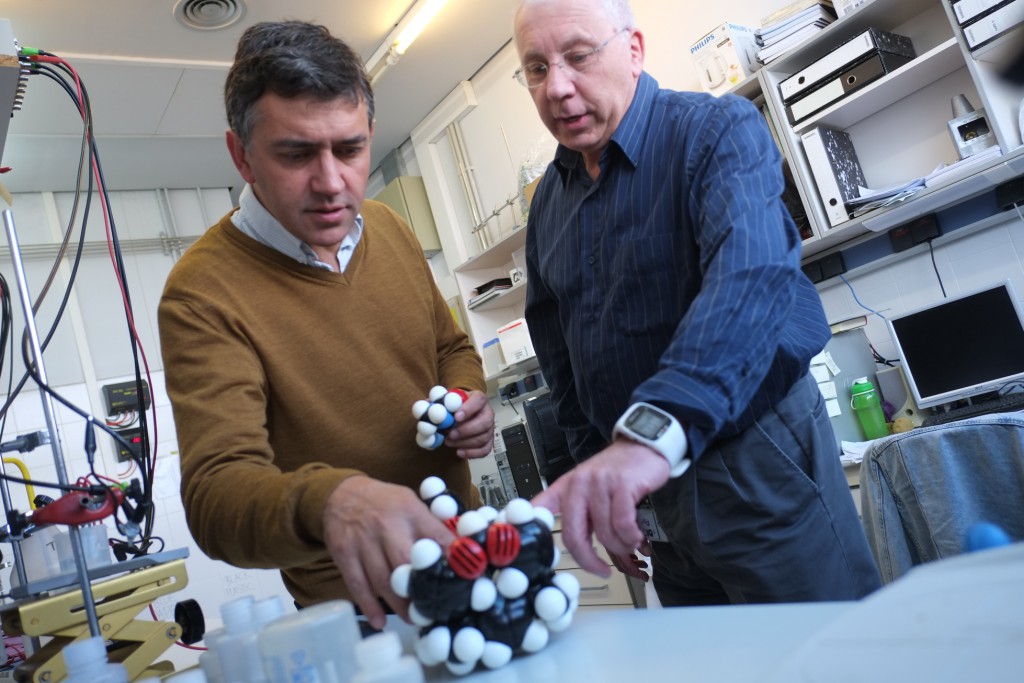18/01/2016
New sensor selective for creatinine in biological samples
The collaboration between the groups of Prof. Francisco J. Andrade (URV) and Prof. Pau Ballester (ICIQ) has allowed the development of the first effective sensor for the selective potentiometric detection of creatinine in body fluids

The collaboration between the groups of Prof. Francisco J. Andrade (URV) and Prof. Pau Ballester (ICIQ) has allowed the development of the first effective sensor for the selective potentiometric detection of creatinine in body fluids
Creatinine is a byproduct of muscle metabolism that is generated continuously in the human body. It is released into the bloodstream and then excreted by the kidneys. An increase in the blood level of creatinine means that the kidneys are not doing their job well. Therefore, its measurement is useful in the diagnosis of various kidney diseases, and permanent control is important in those patients requiring dialysis. Despite the importance of an accurate quantification of creatinine levels, the current methods used for their determination in laboratories and hospitals are complicated, limited and, quite often, the interference from other metabolites can lead to an error in the measurement.
Structure of the inclusion complex
In this context the research groups of professors Ballester and Andrade have developed a sensor suitable for the determination of creatinine in biological fluids such as urine or plasma in an accurate, fast, simple, and cost-effective way. The system consists of an electrode with a polymeric membrane that contains an embedded calix[4]pyrrole based ionophore which has a strong affinity towards creatinine and the creatinine cation. The sensor is highly sensitive with a limit of detection much lower than the normal levels of creatinine in urine or blood. But what is more important, it is highly selective. Some of the most severe interferences observed when sensing large organic cations in biological samples arise from the presence of K+ and Na+, which are typically vastly more prevalent than the creatininium cation. However, the present sensor displays an enhanced potentiometric response for the creatininium cation compared to those cations that exceeds the required threshold values by half an order of magnitude.
“It is gratifying to see that molecular receptors designed and synthesized in our laboratory play a key role in the development of new potentiometric sensors for the quantification of creatinine in real samples of blood and urine. These sensors have been prepared in the URV and produce results similar or even higher than the current analytical methods, have a low production cost and are easy to use” -says Professor Ballester.
Professor Andrade claims that through multidisciplinary collaboration “we have achieved outstanding scientific progress and have carried out a patent with an important application potential.” From the scientific point of view, the determination of creatinine in a simple, effective and economical way “has been a very big challenge.” Moreover, the developed technology can be revolutionary when implementing remote care systems, such as telemedicine. Furthermore, in collaboration with doctors, designers and agents of technology transfer, “we have obtained funding from the ‘CaixaImpulse’ programme to find the most appropriate channels to market,” says the researcher.
The work has been published in Angewandte Chemie International Edition.
Reference: “Recognition and Sensing of Creatinine” T. Guinovart, D. Hernández-Alonso, L. Adriaenssens, P. Blondeau, M. Martínez-Belmonte, F. X. Rius, F. J. Andrade, P. Ballester Angew. Chem. Int. Ed., 2016, DOI: 10.1002/anie.201510136.
